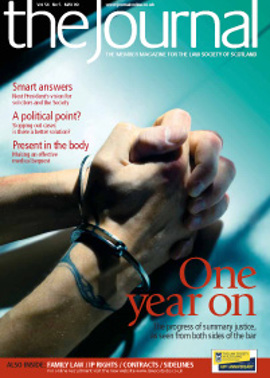Matrix evolutions

In the film trilogy of the same name, the Matrix is an artificial world where nothing is as it seems. The Keanu Reeves character, Neo, rails against this parallel universe in order to live a natural life. Lawyers may empathise with Neo’s plight when they are asked to advise on the interpretation of a contractual provision, because the courts have been rewriting the rules over the past few years to make some or all of the background facts surrounding the contract available to assist them in discovering the intention of the parties. The so-called “factual matrix” has opened up a whole parallel universe for lawyers.
Bonfire of the baggage
There was a time when lawyers understood traditional canons of contractual interpretation to include that contractual provisions should be strictly construed and that the contract should, where possible, be interpreted from within the four corners of the document. That is not to say that contracts were always considered in a vacuum. Often extrinsic evidence would be required to ascertain what the parties meant their words to say. For example, in Houldsworth v Gordon Cumming 1910 SC (HL) 49 a plan used by the parties during negotiations was admitted by the House of Lords to define what the missives meant by “the estate of Dallas”, when this description did not feature in the title deeds.
The House of Lords has in fact been quietly dropping the traditional rules for at least half a century. But the volume was turned up considerably by Lord Hoffmann’s declaration in his landmark speech in Investors Compensation Scheme v West Bromwich Building Society [1998] 1 WLR 896, to the effect that the judicial dismantling of the old rules was nearing completion, when he said: “Almost all the old intellectual baggage of ‘legal’ interpretation has been discarded.” In their place, he set out five “common sense” principles.
The principles relevant to this article are the first three, namely that (1) the document should be interpreted as to what it would mean to a reasonable person, having access to the knowledge within the “factual matrix”; (2) the “factual matrix” may include absolutely anything which was reasonably available to the parties at the time of the contract and which would have affected the understanding of the language of the document by a reasonable man; and (3) previous negotiations of the parties and their declarations of subjective intent are only admissible in an action for rectification.
The Hoffmann approach has proven to be controversial for the sheer breadth of its scope. Professor McBryde in chapter 8 of the third edition of Contract Law in Scotland (favourably reviewed on this very point by Lord Woolman: Journal, January 2008, 45) gives six good reasons why these principles are bad news for the business community. For contracts under negotiation, the consequential uncertainty for draftsmen would result in increasing wordiness. The case law shows that consideration of pre-contractual discussions is not always helpful. Given the time that may have elapsed since the contract was entered into, the evidence may be incomplete or unreliable. For contracts under review, solicitors would, of necessity, have to trawl through reams of background information pertaining to any contract to try to arrive at its meaning. Litigators may be tempted to produce details of every communication, matter of knowledge and commercial practice in evidence. The cost of commercial litigation would rise exponentially. Even Lord Hoffmann acknowledged the potential impact by retreating from admitting “absolutely anything” and restricting the factual matrix to relevant knowledge, in a subsequent speech in BCCI v Ali [2002] 1 AC 251 at 259.
The position in Scotland
The Court of Session has tended to be more cautious than the House of Lords in embracing the full scope of the factual matrix. The indications are that the court has developed a set of indigenous principles for interpreting contracts, representing a sensible curtailment of the wide factual matrix of the Hoffmann approach.
A convenient starting point in establishing the position in Scotland is Lord Drummond Young’s collation of the legal principles from earlier judgments in Emcor Drake and Scull Ltd v Edinburgh Royal Joint Venture 2005 SLT 1233. To the extent that these principles reflected the established law at that time, the finishing point will hopefully be the restatement and expansion of the same principles by Lord Hodge in Forbo-Nairn Ltd v Murrayfield Properties Ltd [2009] CSOH 47. The relevant principle is that the court can have regard to circumstances in which the contract was made to discover the facts to which it refers and its commercial purpose, objectively considered – in particular expert or other technical evidence as to the meaning of the technical provisions in a contract. This extends only to matters that were known, or ought reasonably to have been known, to both parties.
The limitations and qualifications to the final principle are that evidence of the parties’ prior discussions is only admissible to establish their knowledge of the circumstances, not to “put a gloss on the contract”. It is not usually helpful to consider what was said in negotiations, as no consensus had then been reached. Deleted words are not an aid to construction because they are not part of the agreement.
Escape from the matrix?
One reaction to the Hoffmann approach has been to consider drafting a clause which contracts out of it. McBryde considers this to be dangerous because, even if it were possible to alter this rule of law, it might be a mistake because the factual matrix could serve to assist the parties as the background circumstances may have considerable bearing in making sense of the contract. McBryde points to case law showing that draftsmen have often regretted the inclusion of “entire contract” clauses for this reason.
Hope springs
On the strength of Lord Clarke’s Commercial Court judgment in City Wall Properties (Scotland) Ltd v Pearl Assurance plc 2004 SC 214, McBryde suggests that the indications are that the Court of Session is accepting a commonsense view that the words of the contract are paramount.
Since the City Walls case was unsuccessfully appealed to the Inner House ([2007] CSIH 79) as an action for rectification, however, the judicial trend seems to be aligning with the Hoffmann approach. The court preferred this approach to that of Lord Hope in Melanesian Mission Trust Board v Australian Mutual Provident Society [1997] 2 EGLR 128 at 129F. The Hope approach is that the court should read the words of the document without reference to background circumstances, and only if the words are unclear and ambiguous should the court have recourse to those circumstances.
The matrix prevails
Mirroring the dictum of Lord Wilberforce in Reardon Smith Line v Yngvar Hansen-Tangen [1976] 1 WLR 989 at 995, Lord Philip said: “The effect of the [Hoffmann approach] is, it seems to me, that the court begins its consideration of the construction of a contractual provision already equipped with the information available as to the circumstances surrounding the contract, and that information is brought to bear on the court’s consideration from the beginning. The court does not begin by looking at the words themselves, as it were in a vacuum, without reference to the surrounding circumstances, in order to ascertain whether they have a plain meaning or whether there is an ambiguity. To adopt that approach, it seems to me, is to assimilate so far as possible, the way in which the document is interpreted to the commonsense principles by which any serious utterance would be interpreted in ordinary life, and to discard ‘the old intellectual baggage of “legal” interpretation’”.
The court’s position would seem to depend on the circumstances and it will not approve of a trawl through background material in an attempt to depart from the conventional usage. In Autolink Concessionaries (M6) plc v Amey Construction [2009] CSIH 14 Lord Kingarth said: “In construing the language of any contractual provision the search is for the intention of the parties objectively ascertained, and that search requires due consideration of context, not only the whole terms of the contract but also the underlying factual matrix, so far as relevant.... But while all that is true, and important, there can be no doubt that, as has been said, the search begins and often ends with the language of the clause itself. As Lord Hoffmann said in BCCI v Ali at p 269: ‘But the primary source for understanding what the parties meant is their language interpreted in accordance with conventional usage’”.
Where does all this leave solicitors trying to make sense of the post-Hoffmann landscape? It would seem that, as Neo discovers in the Matrix films, the parallel universe formed by the matrix will not be subdued any time soon. The nature, style and content of contracts and information available will obviously differ in different commercial spheres. Even in the same sphere the circumstances will vary greatly. However, a sensible approach would be to consider that advice to a client on interpretation of a contractual provision may be incomplete without considering some or all of the relevant background circumstances. This should be made clear to the client if relevant information is not made available to the solicitor. It is probably trite to suggest that at the outset of litigation, or when instructing counsel for an opinion, the solicitor would be prudent to investigate and evaluate the background material carefully. But it is clear that counsel and court will expect, in Lord Philip’s words, to be equipped with the information available from within the factual matrix to interpret the parties’ intention in framing the contract in the way that they did.
In this issue
- Obama's first 100 days
- Playing politics with the Scottish constitution
- Beneficiaries are suffering from the high cost of advice
- Ever forwards
- Shared principles
- A year of debate
- Ask the audience
- Property sales continue to fall
- Where fact makes law
- Giving up the body
- Playing politics with the constitution
- Matrix evolutions
- Make it happen
- View from the top
- Retiring thoughts
- Law reform update
- Phone a friend
- Lighting the way
- Is Big Brother watching too closely?
- Ask Ash
- Selection, the professional way
- A claims pandemic?
- Bumper crop
- A place in the sun?
- Equality redefined
- Taking diligence forward
- Scottish Solicitors' Discipline Tribunal
- Book reviews
- Website review






